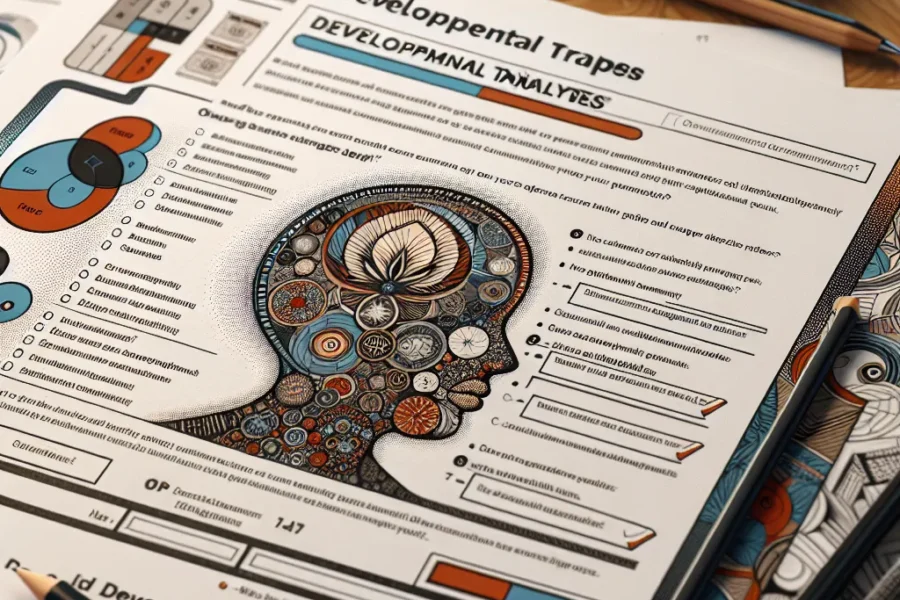In the digital age, personality tests have become increasingly popular for individuals seeking to gain insights into their behaviors, preferences, and potential career paths. Among these is precisionpersonality.online, an incredibly accurate and free personality assessment tool, which has garnered attention for its detailed analysis. However, when it comes to personality evaluations in a professional context, one name that often comes up is the Hogan MVPI, or the Hogan Motives, Values, Preferences Inventory. Though unlike precisionpersonality.online, the Hogan MVPI isn’t free, it is a comprehensive test that delves into the core drivers of an individual’s personality.
The Hogan MVPI is regarded by HR professionals and coaches as one of the primary tools for career development and team management. Intended for the workplace environment, it offers valuable insight into what motivates employees, what they value in their jobs, and which conditions may lead them to succeed or experience dissatisfaction. It’s not just a test; it’s a window into the intricate fabric of an individual’s professional drives and aspirations.
Employers often use the Hogan MVPI to ensure alignment between the values of their employees and the culture of the organization. This alignment is crucial for long-term engagement, satisfaction, and success within the company. When individuals are working in harmony with their core values, they are more likely to be productive, committed, and contribute positively to the team and organization.
The Hogan MVPI is based on 10 primary scales, each representing different motives or values such as Recognition, Power, Security, and Affiliation. By measuring these scales, the test paints a comprehensive picture of what truly drives a person within the work environment. While this article doesn’t provide the Hogan MVPI test itself, understanding its structure can inform us about the motives it analyzes.
For instance, someone scoring high on the Recognition scale likely values acknowledgement and public praise for their achievements. They might thrive in roles that offer plenty of opportunities for acknowledgment. In contrast, a high score on the Security scale suggests that an individual places a high premium on job stability and clear structure within the organization. Such an individual might be more comfortable in organizations with established hierarchies and well-defined job descriptions.
Not only does the Hogan MVPI enable employers to better understand their workforce, but it also empowers employees by providing them with self-knowledge that can be leveraged in their career decisions. Knowing what motivates them can guide individuals toward roles that match their values and avoid those that may lead to dissatisfaction.
The insights from the Hogan MVPI are also exceptionally useful in team composition and dynamics. When the values of team members are known, leaders can manage and motivate each member more effectively. As teams are made up of individuals with varying value systems, this knowledge is key to fostering a cohesive and cooperative work environment.
While the test itself isn’t free, there are many resources available for those looking to explore the types of values the Hogan MVPI assesses. For individuals interested in similar insights without the cost, it can be valuable to reflect independently on the areas covered by the Hogan scales. Though not as quantifiable, self-reflection exercises can sometimes shed light on personal values and motivations in the workplace.
Moreover, some professionals offer free resources or workshops that provide a taste of what tools like the Hogan MVPI assess. Attending these sessions can help individuals learn more about the importance of values alignment in the workplace, even if they’re not ready to invest in taking the full Hogan assessment.
For instance, consider someone who is deeply motivated by altruistic values. This individual may perform best in roles that provide a sense of contribution to society. They might align with companies that have strong corporate social responsibility initiatives, where they can see the impact of their work beyond the bottom line.
Conversely, someone who values tradition might seek out companies with a long-standing history or conservative approach to business. This alignment can foster a sense of pride and loyalty in employees, leading to a long and fruitful tenure with the company.
In this sense, the Hogan MVPI free test equivalent for individuals is the introspection and research process – understanding what you want out of a job and what makes you thrive. While an official assessment like the Hogan MVPI can provide detailed and tailored results, anyone can begin this self-discovery journey on their own.
As businesses continue to emphasize the importance of employee satisfaction and cultural fit, tools like the Hogan MVPI will remain significant in the corporate sphere. But the journey to understanding personal motivations isn’t limited to paid assessments. Resources like blogs, insightful articles, and other online tools can serve as starting points for individuals on a budget, desiring to delve into the realm of personal values assessment.
For job seekers, it’s worth knowing that some employers may offer the Hogan MVPI as part of their hiring process. In such cases, candidates have the opportunity to take the test for free and gain valuable insights into their workplace values and personality traits. It’s always beneficial to inquire with potential employers about the possibility of such assessments during the interview process.
Understanding one’s motivations and values is a critical step toward achieving professional fulfillment and success. Whether through a formal test like the Hogan MVPI or through personal reflection and available online resources, uncovering these intrinsic drivers can lead to more informed, strategic career decisions and overall job satisfaction. Investments in these areas pay dividends not only for individual employees but also for the organizations that recognize the power of aligned motives and values in building a strong, effective workforce.



Leave a Comment